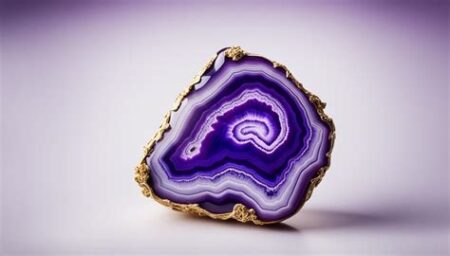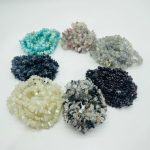In the vast tapestry of gemstones, grey stones occupy a distinct place of elegance and subtlety. Their understated hues and enigmatic presence have captivated jewelry enthusiasts and mineral collectors alike. From the shimmering greys of moonstone to the earthy tones of slate, these minerals showcase a remarkable range of variations.

Gemstones of the Grey Spectrum
Moonstone
Moonstone, a variety of feldspar, exhibits an enchanting milky white to blue-grey glow known as adularescence. This shimmering effect, reminiscent of moonlight, makes it a highly sought-after gemstone for jewelry and ornamental purposes. According to the Gemological Institute of America (GIA), moonstone is considered a moderate gemstone with a Mohs hardness of 6-6.5.
Smoky Quartz
Smoky quartz, a type of quartz, ranges in color from light smoky grey to near-black. This color variation is caused by natural irradiation. Smoky quartz is commonly used in jewelry, as its durability (Mohs hardness of 7) makes it suitable for everyday wear.
Labradorite
Labradorite, a feldspar mineral, is renowned for its spectacular play of colors known as labradorescence. Shimmering shades of blue, green, and grey intermingle in this mesmerizing stone, creating a mesmerizing optical phenomenon. The International Colored Gemstone Association (ICA) estimates that the global production of labradorite is around 1,000 tons per year.
Slate
Slate, a metamorphic rock, possesses a distinctive grey-black hue and a fine-grained texture. It is widely utilized for roofing, flooring, and ornamental applications due to its durability and resistance to weathering. The United States Geological Survey (USGS) reports that the top slate-producing states in the United States are Pennsylvania, Vermont, and Virginia.
Industrial Applications of Grey Stones
Beyond their aesthetic appeal, grey stones also serve various industrial purposes.
Concrete
Grey stones, particularly limestone and granite, are crushed and used as aggregates in concrete production. Their high compressive strength and resistance to abrasion make them essential components in construction materials.
Abrasives
Certain grey stones, such as sandstone and pumice, are used in the production of abrasives. Their rough surfaces are employed for grinding, polishing, and cleaning applications.
Refractories
High-temperature resistant grey stones, such as chromite and magnesite, are used in the manufacture of refractories. These materials are employed in furnaces, kilns, and other industrial processes that require high-heat tolerance.
Grey Stones in Art and Culture
Throughout history, grey stones have held cultural and artistic significance.
Architecture
Slate and granite have been widely employed as construction materials in iconic structures around the world, including castles, cathedrals, and monuments. Their durability and resistance to weathering have made them ideal for centuries-old edifices.
Sculpture
Grey stones, such as marble and limestone, have been carved into intricate sculptures for millennia. Their neutral hues and versatile textures allow artists to bring their visions to life, creating masterpieces that endure through time.
Jewelry
Grey stones are increasingly gaining popularity in jewelry making. Moonstone, labradorite, and smoky quartz are prized for their subtle elegance and unique visual attributes. They are often set in silver or gold, creating sophisticated and timeless pieces.
Tips for Choosing and Using Grey Stones
Choosing the Right Stone
Consider the desired application when selecting a grey stone. For jewelry, moonstone and labradorite are excellent choices due to their durability and aesthetic appeal. For construction purposes, limestone and granite offer strength and weather resistance.
Caring for Grey Stones
To maintain the beauty of grey stones, follow these care instructions:
- Clean stones with a soft cloth and warm water.
- Avoid using harsh detergents or abrasives.
- Store stones in a cool, dry place away from direct sunlight.
- Have stones professionally polished or cleaned periodically to restore their luster.
Common Mistakes to Avoid
- Overcleaning: Excessive cleaning can damage the surface of grey stones.
- Exposure to Heat: Avoid exposing grey stones to extreme heat, as this can cause cracking or discoloration.
- Improper Storage: Storing stones in humid or moist conditions can lead to staining or damage.
Conclusion
Grey stones encompass a diverse range of minerals that captivate with their understated beauty and practical applications. From the shimmering glow of moonstone to the strength and durability of slate, these stones offer a myriad of possibilities for jewelry, art, construction, and industry. By understanding their properties and care requirements, you can harness the allure of grey stones and enhance your life with their timeless appeal.




























